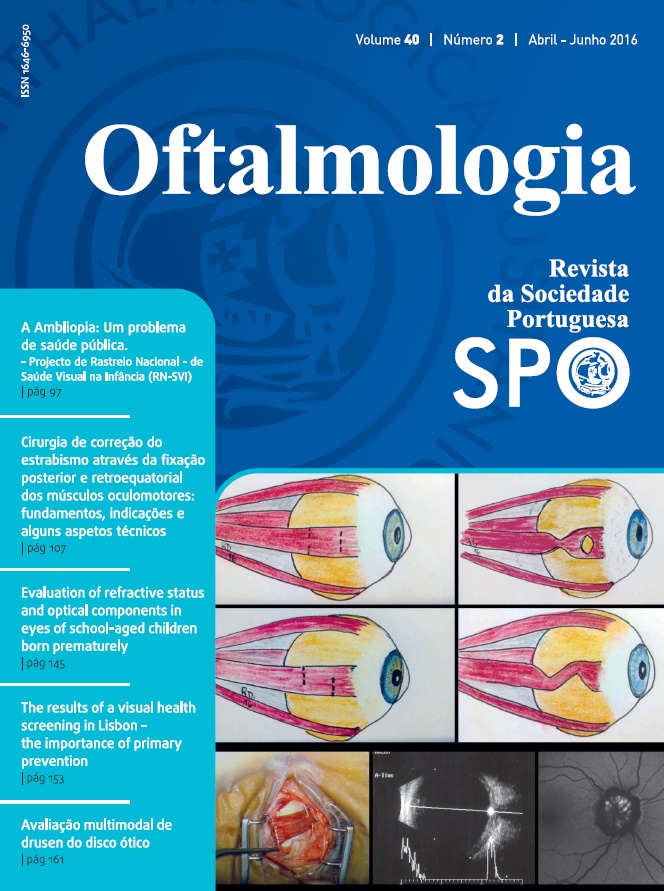Optical Coherence Tomography: a window to multiple sclerosis?
DOI:
https://doi.org/10.48560/rspo.7560Keywords:
Keywords, Multiple sclerosis, optical coherence tomography, optic neuritis, ganglion cell layerAbstract
Abstract
Introduction:
Multiple sclerosis (MS) is an inflammatory immune-mediated demyelinating disease that frequently affects the central nervous system. Approximately 20% of patients have optic neuritis has the first manifestation of the disease. Its frequency, heterogeneity and absence of definitive treatment make it a therapeutic and diagnostic challenge for both the patient and the clinician.
Material and methods:
Retrospective study of 133 eyes of 87 patients, 38 patients with MS (Group 1), 9 patients with isolated optic neuritis (Group 2) and 40 healthy patients (Group 3) from the Neurophthalmology Department of Centro Hospitalar de Lisboa Central from January 2013 to August 2015.
Patients were characterized according to gender, age, years of follow-up, best corrected visual acuity, presence of other ocular disorders and episodes of optic neuritis. Patients with other ocular pathologies were excluded.
Optical coherence tomography (OCT Spectralis, Heidelberg Engineering) of the macular region was done in all patients, followed by automatic segmentation of the retinal layer. Statistical tests were made to calculate statistically significant results between different groups.
Results:
Of the 87 patients evaluated, the mean age in Group 1 was 41.55 compared to 36.88 in Group 2 and 44.73 in the control group. Mean age of diagnosis for patients with MS was 33.73 years with a mean follow up of 8.01 years, whereas patients with isolated optic neuritis had a mean age of diagnosis of 34.33 years, with a mean follow-up of 2.88 years. Best corrected visual acuity ranged from 0.2 to 1.0 in Group 1 and 0.5 to 1.0 in Group 2.
In patients with previous episodes of optic neuritis isolated or associated with multiple sclerosis we observed a statistically significant (p<0.05) reduction of the average retinal thickness as well as a thinner retinal nerve fiber layer, ganglion cell layer and inner plexiform layer when compared to the control group.
Conclusion:
Thickness of the internal retinal layers was reduced (retinal nerve, ganglion cell and inner plexiform layer) in a statistically significant value (p<0.05) when compared to the control group.
Downloads
Downloads
Additional Files
Published
How to Cite
Issue
Section
License
Do not forget to download the Authorship responsibility statement/Authorization for Publication and Conflict of Interest.
The article can only be submitted with these two documents.
To obtain the Authorship responsibility statement/Authorization for Publication file, click here.
To obtain the Conflict of Interest file (ICMJE template), click here





